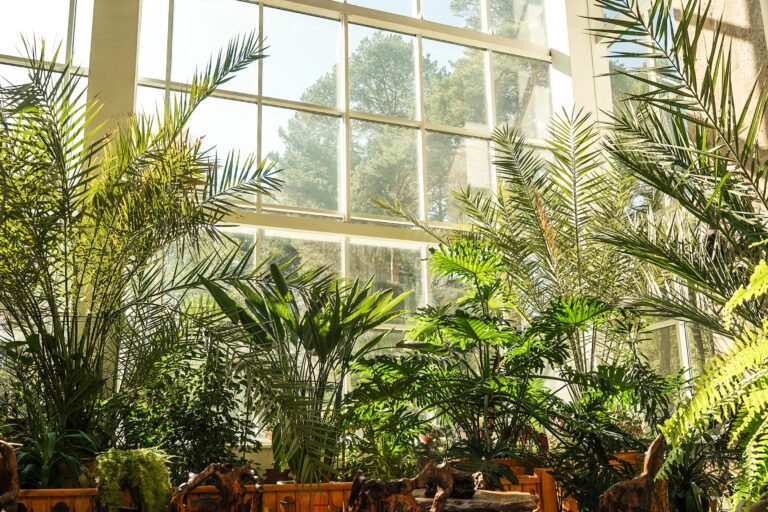If you’ve ever dreamed of having fresh herbs, vibrant veggies, or colorful flowers at your fingertips year-round, building an indoor garden could be the perfect solution. It started as a way to bring nature inside during the long winters. But over time, it turned into a year-round project that brings a sense of fulfillment and calm.
In this blog, I’ll share the process I followed to build my own indoor garden, from planning to harvesting, and hopefully inspire you to start your own indoor oasis. Here’s how you can build a thriving indoor garden that’ll keep growing all year long.
1. Pick the Right Location
The first thing I did when planning my indoor garden was to find the right spot. Ideally, you’ll want to choose a space that gets as much natural light as possible. A south-facing window is usually the best, but east- or west-facing windows can work well too, as long as they get at least 4-6 hours of sunlight each day.
If you’re tight on space or sunlight, don’t worry—artificial lighting can work wonders. LED grow lights are a great option for providing the right spectrum of light for plants. I found that setting up a few grow lights above my garden helped my plants thrive, even during the darker months.
2. Choose the Right Plants
One of the most rewarding things about indoor gardening is experimenting with what grows best inside. I started with easy-to-care-for plants like herbs—basil, mint, and rosemary. These are great for beginners because they don’t need too much attention and grow well in smaller spaces.
If you’re hoping to grow vegetables, leafy greens like lettuce, spinach, and kale are fantastic indoor crops. They don’t require a lot of space or deep soil to thrive. You can also grow small fruiting plants, like tomatoes, peppers, and strawberries, in containers.
3. Start with Containers and Soil
You want to avoid waterlogging, so drainage is key. I went with a mix of traditional terracotta pots, decorative planters, and a few fabric grow bags for my veggies. These containers not only look great but allow the plants to breathe, keeping the soil healthy.
One mistake I made early on was using regular garden soil for my indoor plants. Trust me, you’ll want to go with a high-quality potting mix designed for indoor plants. It helps with drainage and keeps the soil light and breathable.
4. Water Properly
Watering is one of the trickiest aspects of indoor gardening. Since plants don’t get natural rainfall, it’s important to keep an eye on their moisture levels. Over-watering or under-watering can lead to problems like root rot or wilting.
I started checking the soil with my finger every few days—if it felt dry an inch or two down, I’d give it a good drink. If it was still moist, I’d wait another day or two.
5. Control Temperature & Humidity
Most indoor plants do well in temperatures between 60°F and 75°F (15°C to 24°C), so if your home is within that range, you’re good. Just try not to put your plants right next to a heater or air conditioner because they don’t like sudden temperature changes.
Humidity can also be an issue, especially in winter when indoor air tends to get dry. I got a small humidifier to run near my garden, and it’s worked wonders. If you don’t have a humidifier, misting the plants with water can also help boost humidity.
6. Regular Maintenance
Like any garden, an indoor garden requires a little TLC. Pruning dead or yellowing leaves helps keep the plants looking fresh and encourages new growth. Fertilizing is also important, but I don’t go overboard. I use a balanced, water-soluble fertilizer every few weeks to give them a little extra boost.
One of the best parts of indoor gardening is harvesting. Whether it’s picking fresh basil for a pasta dish or snipping a few leaves of lettuce for a salad, it feels so satisfying to grow your own food. Plus, regularly trimming plants helps them grow stronger and more vibrant.
7. Incorporate Vertical Gardening
One thing that really expanded my indoor garden was vertical gardening. Since I didn’t have a ton of space, I decided to use wall-mounted planters, shelves, and hanging baskets. Vertical gardening can add greenery to otherwise unused areas—like a kitchen wall or hallway—and can even free up space on the floor.
I also tried building a DIY vertical garden with a few wooden pallets and some simple tools. This allowed me to grow even more plants in the same amount of space. Plus, it looks really cool!
Conclusion
Building an indoor garden is a rewarding and low-maintenance way to bring some life into your home all year long. Even if you have a small space or minimal experience, there’s a plant out there that will thrive in your environment. So, if you’ve been thinking about starting an indoor garden, I’d say go for it—start small, learn as you go, and enjoy the process.


































